








The theme for the second round is"Monuments of Indian History"
So Participants have to collect pictures regarding "Monuments of Indian History" and info regarding the same.
Read n vote for best Info+Pic+Title
Poll Choice 1 :
The Charminar - Monuments of Hyderabad, A.P. India
The Charminar, built in 1591 CE, is a monument and mosque located in Hyderabad, Andhra Pradesh, India. The landmark has become a global icon of Hyderabad, listed among the most recognized structures of India. The Charminar is on the east bank of Musi river.
To the northeast lies the Laad Bazaar and in the west end lies the granite-made richly ornamented Makkah Masjid.
The English name is a transliteration and combination of the Urdu words Char and Minar, translating to "Four Towers"; the eponymous towers are ornate minarets attached and supported by four grand arches.
View of Charminar
Early in the 1580's the 5th ruler of Golconda Sultanate, Muhammad Quli Qutb Shah planned to shift his capital 5 miles (8.0 km) away from Golkonda and commissioned a new capital city to be constructed on the south-west banks of the Musi River.]Shortly after Qutb Shah had shifted his capital from Golkonda to what is now known as Hyderabad, the Charminar is the first structure to be constructed. Though the Charminar lacks a foundation inscription and date of its construction is specifically unknown, multiple myths had been recorded by the historical travellers, academic scholars and historians.
Structure
Charminar has the signature style of Islamic architecture. The structure is made of granite, limestone, mortar and pulverised marble. Initially the monument with its four arches was so proportionately planned that when the fort was opened one could catch a glimpse of the bustling Hyderabad city as these Charminar arches were facing the most active royal ancestral streets.
There is also a legend of an underground tunnel connecting the Golkonda fort to Charminar, possibly intended as an escape route for the Qutb Shahi rulers in case of a siege, though the location of the tunnel is unknown
Zoomed view of the top
View of the Dome
Makkah Masjid
The monument overlooks another and grand mosque called the Makkah Masjid. Muhammad Quli Qutb Shah, the 5th ruler of the Qutb Shahi dynasty, commissioned bricks to be made from the soil brought from Mecca, the holiest site of Islam, and used them in the construction of the central arch of the mosque, thus giving the mosque its name. It formed the centerpiece around which the city was planned by Muhammad Quli Qutub Shah.
View of Makkah Masjid
A thriving market exists around the Charminar: Laad Baazar is known for jewellery, especially exquisite bangles, and the Pather Gatti is famous for pearls. In its heyday, the Charminar market had some 14,000 shops.
Arial View of Charminar n surroundings
Golconda Fort
Golkonda also known as Golla konda (shepherd's hill) a ruined city of south India and capital of ancient Kingdom of Golkonda (c.1518'1687), is situated 11 km west of Hyderabad.
Full view of Golconda Fort
The 13th century Golkonda Fort was built by the Kakatiyas. In the 16th century, Golkonda was the capital city of the Qutb Shahi kingdom, near Hyderabad. The city was home to one of the most powerful Muslim sultanates of the region and was the flourishing center of diamond trade.
Visitors to Fort
The most important builder of Golkonda was Ibrahim Quli Qutub Shah Wali, the fourth Qutub king of the Qutub Shahi Dynasty. Ibrahim was following in the spirit of his ancestors, the Qutub Shahi kings, a great family of builders who had ruled the kingdom of Golkonda from 1512.
Their first capital, the fortress citadel of Golkonda, was rebuilt for defense from invading Mughals from the north. They laid out Golkonda's splendid monuments, now in ruins, and designed a perfect acoustical system by which a hand clap sounded at the fort's main gates, the grand portico, was heard at the top of the citadel, situated on a 300-foot (91 m)-high granite hill. This is one of the fascinating features of the fort.
Ruins of Fort
Highest Point of Fort
Fountain of those days in front of fort
They ruled over most of present day Andhra Pradesh before the British Raj. After transferring Northern Circars to British, they ruled the Telangana region and some parts of present day Karnataka and Maharashtra
Poll Choice 2 :
Janjira Fort: Unconquered Emerald of Arabian sea
The fort was originally built in 15th century on a smaller scale by a local Maratha-Fisherman Chieftain- Ram Patil to protect his people from pirates/ thieves and was known as " Medhekot". He was a fearless man with independent bent of mind who was quite popular with the local fishermen. Nizam, the the ruler from Ahmadnagar felt threatened by this and sent one of his Siddi commanders Piram Khan, who came with three ships armed with necessary weapons and soldiers and entered fort in disguise as a travelling merchant, at night. He captured the unsuspecting fishermen inside and massacred them including the brave Ram Patil, as they refused to be converted to Islam. Piram Khan was succeeded by Burhan Khan, who demolished the original fort and built an impregnable much bigger, 22 acre, stone fort sometime in between 1567 and 1571. The fort was called 'Jazeere Mahroob Jazeera ' which in Arabic means an Island. Siddhi Ambersatak was nominated as Commander of the fort.
Despite their repeated attempts, the Portuguese, the British and the Marathas failed to subdue the power of the Siddi's, who were themselves allied with the Mughal Empire. Major historical figures from Murud-Janjira include men such as Yahya Saleh and Sidi Yaqub. The fort has a tunnel which opens in Rajpuri. The fort was made by a mixture of lead, sand and gul.
The Marathas led by Shivaji attempted to scale the 12 meters high Granite walls but failed in all his attempts. His son Sambhaji even attempted to tunnel his way into the fort but was unsuccessful in all his attempts.[3]
In the year 1736, Siddi's of Murud-Janjira set out to recapture Raigarh from the ravaging forces of Baji Rao, on 19th April 1736, Chimnaji attacked the gathering forces in the encampments of the Siddi's during the Battle of Riwas near Riwas, when the confrontation ended 1500 Siddi's including their leader Siddi Sat were killed. Peace was concluded in September 1736, but the Siddi's were confined to Janjira, Gowalkot and Anjanwel.
Pics
Monuments of India
The history of Indian monuments has been glorious and goes back to the times of kings and rulers.

These medieval marvels exhibit a long tradition of glory, beauty, and majesty. Each monument is a symbolic testimony of a ruler or king who built it. The entire history of Indian architecture is hidden in the magnificence of these massive and strong monuments which have not only endured the test of time but proved to be marvels for today's architectures and engineering relevance.
Indian monuments are not just a marvel but they are the heritage of India's past and reveal the talent of India's architectural proficiency. Today, monuments are the center of tourist attractions and the limelight of Indian tourism.
A few monuments of India,
1. Hawa Mahal

The Hawa Mahal Palace is located in Jaipur city. Maharaja Sawai Pratap Singh built the Hawa Mahal Palace in the year 1799; Lal Chand Usta designed the palace in the form of Lord Krishna's Crown. The Hawa Mahal Palace is a part of the Royal Palace including the women's chambers. The Hawa Mahal palace was built to examine the day-to-day life of the royal women.
2. Mysore Palace
 The Mysore palace is located in the Mysore city, in the state of Karnataka, India. The Mysore palace is also the residence of the Mysore royal family. The Mysore palace is regarded as the most splendid structures in India. The Mysore palace is well known for its architecture. A number of rulers from different kingdoms and various methods of architecture and various construction styles are involved in the construction of the palace. The lighting of the palace which is done during the Dussera festival is a highlight event at the palace.
The Mysore palace is located in the Mysore city, in the state of Karnataka, India. The Mysore palace is also the residence of the Mysore royal family. The Mysore palace is regarded as the most splendid structures in India. The Mysore palace is well known for its architecture. A number of rulers from different kingdoms and various methods of architecture and various construction styles are involved in the construction of the palace. The lighting of the palace which is done during the Dussera festival is a highlight event at the palace.
3. Charminar

The charminar Hyderabad's best known landmark was built 1591 by Sultan Mohammed Quli Qutub Shah to appease the force of evil savaging his new city with epidemic and plague. Standing in the heart of the old walled city and surround by lively bazaars, the charminar ('four tower') is a 56m high triumphal arch. The arch is notable for its elegant balconies, stucco decorations and the small mosque,
4. Taj Mahal

The Taj Mahal is a tomb situated in Agra, India. The Taj Mahal was built by the Mughal emperor, Shah Jahan in the memory of his beloved wife, Mumtaz Mahal. The Taj Mahal is one of The Seven Wonders of the World and is said to be one of the finest art of the Mughal architecture. The architecture has a mixture of Persian, Ottoman, India and Islamic art. During the year 1983, the Taj became a part of the UNESCO, World heritage Site.
5. Qutub Minar
The Qutb Minar is located in Delhi. The Qutb Minar is a famous historical spot in Delhi, which is listed by the UNESCO World Heritage Site. The Qutb Minar is built with bricks and is the tallest minaret (Islamic mosques of great architecture) in the world. The Qutb Minar is also a fine example of Indo-Islamic architecture and the earliest structure during the Indo-Islamic period.
6. Gateway

The Gateway of India is located in South Mumbai, in the state of Maharashtra, India.
The Gateway of India is built with yellow basalt (extrusive volcanic rock) and concrete. The architecture of the Gateway is purely Indo-Saracenic (combination of Indian and Islamic architecture) style. The arch of the gateway is about 26 meters; the dome at the center is about 15 meters in diameter and 26 meters from the ground surface. The Indian government spent 21 lakh Rupees for the Gateways construction.
7. Sanchi Stupa

Sanchi is situated in the state of Madhya Pradesh in India. It lies at a distance of approximately 52 km from the capital city of Bhopal and 10 km from Vidisha. The major attractions of Sanchi include a number of Buddhist stupas, monasteries, temples and pillars. All these structures date back to somewhere between 3rd century BC and 12th century AD. The Mauryan emperor Ashoka founded all the stupas at Sanchi in the honor of Lord Buddha. They have the distinction of being included by UNESCO in its list of World Heritage Sites.
Some more monuments are Vicotrial Memorial , Cellular Jail, Vidhan Soudha etc.
Golden Residencies of India
(Monuments of India)
India has a glorious history. India has been ruled by great emperors and kings of their time. These great emperors and kings created big and spectacular monuments of their heritage. Following are some examples of great Indian monuments:
1)Hawa Mahal-
Hawa Mahal stands as the glorious entrance to the City Palace, Jaipur. It is an important landmark of the city. It is an epitome of the Rajputana architecture. The fascinating five-storey building "Palace of winds" is a blend of beauty and splendor which is much close to Rajasthan's culture. Built in 1779 by Maharaja
Sawai Pratap Singh, Hawa Mahal gets a tourist attraction because of its pyramid shape and 953 small windows.
2) Taj Mahal-
Taj Mahal, the pinnacle of Mughal architecture, was built by the Mughal emperor Shah Jahan (1628-1658), grandson of Akbar the great, in the memory of his queen Arjumand Bano Begum, entitled 'Mumtaz Mahal'. Mumtaz Mahal was a niece of empress Nur Jahan. She was born in 1593 and died in 1631, during the birth of her fourteenth child at Burhanpur. Her mortal remains were temporarily buried in the Zainabad garden. Six months later, her body was transferred to Agra to be finally enshrined in the crypt of the main tomb of the Taj Mahal. The Taj Mahal is the mausoleum of both Mumtaz Mahal and Shah Jahan.
3)Mysore Palace-
The Mysore Palace, Karnataka is popularly known as the the Maharajah's Palace, situated at the city center at Mirza Road. Mysore Palace is one of the most fascinating monument of Mysore city. The other name of the Mysore Palace is Amba Vilas and is the largest palaces of India. Mysore's Wodeyar Mahararajas resided in the Mysore Palace of Karnataka.
The Mysore Palace is a three storied edifice with a length of 245 feet and breadth of 156 feet. The Mysore Palace at Karnataka comprises of a sequence of arched square towers enclosed by domes. The original palace of Mysore was carved out of wood which was accidentally burnt in 1897. The 24th Wodeyar Raja rebuilt the Mysore Palace of Karnataka in 1912. The Mysore Palace followed the Indo-Saracenic style of architecture.
4)Victoria Memorial-
Victoria Memorial, one of India's most beautiful monuments, represent a unique combination of classical European architecture and Mughal motifs. The domed and white marble museum sprawls over 64 acres and is set in a landscaped garden at the southern side of the Kolkata's maidan (ground) near Jawaharlal Nehru Road.
5) Charminar-
The charminar Hyderabad's best known landmark was built 1591 by Sultan Mohammed Quli Qutub Shah to appease the force of evil savaging his new city with epidemic and plague. Standing in the heart of the old walled city and surround by lively bazaars, the charminar ('four tower') is a 56m high triumphal arch. The arch is notable for its elegant balconies, stucco decorations and the small mosque, Hyderabad's oldest, on the 2nd floor. An image of the grace every packet of charminar cigarettes, one of India's most popular brand.
6) Qutub Minar-
Qutub-ud-din Aibak laid the foundation for Qutub Minar in 1199 AD and his successor and son-in-law Shamsu'd-Din- Iitutmish completed the structure by adding three more stories. Standing at 72.5 meters, it is the highest stone tower in India. Its base diameter is 14.3 meters and its top diameter is 2.7 meters. It has 379 steps leading to its top story. The lower three stories are made using red sand stone and the top two with marble and sand stone.
7)Sanchi Stupas-
Sanchi is situated in the state of Madhya Pradesh in India. It lies at a distance of approximately 52 km from the capital city of Bhopal and 10 km from Vidisha. The major attractions of Sanchi include a number of Buddhist stupas, monasteries, temples and pillars. All these structures date back to somewhere between 3rd century BC and 12th century AD. The Mauryan emperor Ashoka founded all the stupas at Sanchi in the honor of Lord Buddha. They have the distinction of being included by UNESCO in its list of World Heritage Sites.
Poll Choice 5 :
Deogarh -The House Of The Gods.
Deogarh Is A Small Farming Village Located In The Lalitpur District, UP. It Is Known For Its Gupta Monuments. It Is Located On The Hill Fort Near The River Betwa. The Gupta Temple Dedicated To Lord Vishnu Is The Earliest Known Panchyatana Temple In North India. It Is A Dashavatar Temple...The Specialty Of This Temple Is, It Has Curved Figures Of The river Goddesses...Ganga And Yamuna. There Are A Number Of Jain Temples.^^Map Showing The Location Of Deogarh.The Dashavartar Temple.The Gupta Temple Dedicated To Lord Vishnu Is The Earliest Known Panchyatana Temple In North India. It Os Also Called The Sagar Marh Or The Temple By The Well. It Was The First North Indian Temple With A Shikhar Or Tower, And Although The Shikhar Is Curtailed And Part Of It Has Disappeared, The Temple Has A High Plinth And Is Set With A Basement Porch. The Doorways Have Carved Figures Of The River Goddesses Ganga And Yamuna. On The Side Walls, There Are Sculptures Depicting Gajendra Moksha, Nar-Narayan Tapasya, And Sheshshayi Vishnu. A Protective Wall Had Been Built Around The Temple When It Was Discovered. But, The Deity Of The Temple Is Missing Believed To Be Relocated Somewhere Else. ^^The Carving Of Goddesses Ganga And Yamuna On The Doorways Of The Dashavatar Temple. ^^A Sculpture Of Nar (Right) And Narayan (Left).^^Sculpture Depicting Lord Vishnu Lying On The Serpent Bed.
^^A Sculpture Of Nar (Right) And Narayan (Left).^^Sculpture Depicting Lord Vishnu Lying On The Serpent Bed. ^^Sculpture Depicting Lord Vishnu Saving Gajendra And Granting Him Moksha.
^^Sculpture Depicting Lord Vishnu Saving Gajendra And Granting Him Moksha.
Poll Choice 6 :
INDIAN MOMUMENTS: MIXTURE OF PRIDE, BEAUTY,PASSION & FAME.
Lotus Temple
Lotus Temple is situated 12 km to the southeast of Connaught Place. Architecturally one of the most splendid temples of India, Delhi Lotus Temple is called so because it is built in the shape of a Lotus flower. The temple got completed in the year 1986 and rises to a height of more than 40 m. Located on Bahapur Hills, it is the seventh and the latest Baha'i houses of worship in the world. Bahai Temple of New Delhi is a white marble monument designed like a half-opened lotus.
Twenty-seven giant lotus petals of white marble spring out from nine pools and walkways of the temple. These walkways represent the nine unifying spiritual paths of the Baha'i faith. Exquisitely manicured lawns surround the building of the Lotus Temple.
There is a simple, but outstanding 34.27 m high central hall in the temple where people sit and meditate. Petal alcoves of the temple are inscribed with stimulating quotes of the Baha'i sacred scriptures. Though the temple belongs to the Baha'i sect, it is open to people of each and every faith. The Baha'i religion, an independent one, places great importance on prayer and meditation as instruments for the progress of the human soul.
Lakshmi Narayan Mandir is situated to the west of Connaught Place in Delhi. Constructed by Raja Baldev Das in the year 1938, it is dedicated to Lord Vishnu and Goddess Lakshmi. Also known by the name of Birla Mandir of New Delhi, this temple has quite an interesting history attached to it. Built over a period of 6 years, the temple was inaugurated by Mahatma Gandhi. But, he kept a condition that he will inaugurate the Delhi Laxmi Narain Temple only if the people from all castes, especially untouchables, would be able to gain entry inside it. The temple constitutes of one of the major draws of the city and is visited by numerous devotees and international tourists every year.
Lakshmi Narayan Mandir is built magnificently, although with a modern touch. Adorning the interiors of the temples are beautiful carvings depicting the scenes from mythology. Numerous Hindu symbols and quotes from the Gita and the Upanishads ornament the temple walls. The highest Shikara (tower) in the temple soars to an altitude of 165 ft, while the ancillary one is about 116 ft. Facing east and standing on an elevated platform, Birla Mandir of Delhi also enshrines the holy Vedas. The main shrine is dedicated to Lord Narayan and Goddess Lakshmi, while the smaller ones are of Lord Shiva, Lord Ganesha and Lord Hanuman and Goddess Durga.
To the north of the New Delhi Laxmi Narain Temple is the Geeta Bhawan, devoted to Lord Krishna. There is also a Buddha temple in this temple complex, adorned with murals describing his life and work. All the statues in the temple are made up of marble and were brought from Jaipur. Miniature rock temples, which dot the temple, hold a special attraction for the children. The splendor of the temple is enhanced by an artificial landscape in the back, with mountains and cascading waterfalls. The festival of Janmashtami, the birth anniversary of Lord Krishna, lends an enhanced significance to the temple.

Tirumala Tirupati Temple is a famous Hindu Temple of Lord Venkateswara and is accredited for being the most visited temple of India and second most visited shrine in the world after Vetican. Considered as the most sacred and the richest temple in the world, Tirupati temple is situated in the town of Tirupati. It is located 67-km away from Chittoor in Chittoor district of southern Andhra Pradesh. The temple is built on the Venkatadri hill having an height of 853m (2,800ft.) above the sea level, one of the seven hills of Tirumala, and hence is also known as theTemple of Seven Hills. The presiding deity of the temple, Lord Venkateswara, is also known by other names - Balaji or Srinivasa or Perumal.
It attracts pilgrims from all over the country and it is not unusual for pilgrims to stand in line for hours together to obtain a glimpse of the presiding deity for a few fleeting seconds. The temple is visited by about 50,000 to 100,000 pilgrims daily, while on special occasions and festivals, like the annual Brahmotsavam, the number of pilgrims shoots up to 500,000, making it one of the most visited holy place in the world.
According to the legend, the temple has a self-manifested idol murti of Lord Vishnu, with the Lord believed to have resided here for the entire Kali Yuga.
The ancient Tirupati temple follows the Dravidian style of architecture. The gopuram of this temple is its highlight. The 'Vimana' or Cupola, named the "the Ananda Nilayam" is placed over the sanctum sanctorum. It completely veiled with gold plate. There are three 'Prakarams' or enclosures in the temple, among them the outermost enclosure boasts of the 'Dhvajastambha' or the banner post. The image of the temple deity represents both Lord Vishnu and Lord Shiva. Lord Vishnu is considered as the preserver whereas the Lord Shiva is considered as the destroyer in Hindu religion.

Mumbai's most famous monument, this is the starting point for most tourists who want to explore the city. It was built as a triumphal arch to commemorate the visit of King George V and Queen Mary, complete with four turrets and intricate latticework carved into the yellow basalt stone.
Ironically, when the Raj ended in 1947, this colonial symbol also became a sort of epitaph: the last of the British ships that set sail for England left from the Gateway. Today this symbol of colonialism has got Indianised, drawing droves of local tourists and citizens. Behind the arch, there are steps leading down to the water. Here, you can get onto one of the bobbing little motor launches, for a short cruise through Mumbai's splendid natural harbour.
Built in the Indo-saracenic style, the Gateway of India is meant to commemorate the visit of King George V and Queen Mary to Mumbai, prior to the Darbar in Delhi in December 1911. The foundation stone was laid on March 31, 1911 and George Wittet's final design sanctioned in August 1914.
Between 1915 and 1919 work proceeded on reclamations at Apollo Pier for the land on which the gateway and the new sea wall would be built. The foundations were completed in 1920.
The Gateway is built from yellow Kharodi basalt and reinforced concrete. The central dome is 48 feet in diameter and 83 feet above ground at its highest point. The whole harbour front was realigned in order to come in line with a planned esplanade which would sweep down to the centre of the town.

Buland Darwaza was built by the great Mughal Emperor Akbar in 1601 A.D. Akbar built the Buland Darwaza to commemorate his victory over Gujarat state. The Buland Darwaza is 53.63 meters high and 35 meters wide. Buland Darwaza is the highest gateway in the world and it is an example of the beautiful Mughal architecture.
The Buland Darwaza is made of red and buff sandstone, and it is decorated by carving and inlaying of black and white marble. In this Buland darwaza, an islamic inscription written in persian reads "Jesus, Son of Mary said 'The world is a Bridge, pass over it, but build no houses upon it.

The
Daria Rajmahal was built in the late 19th century by Maharaja Bhavsinhji to designs prepared by the state engineer, Phulchand Parekh. Built in creamy local stone, it stands on the edge of the
Arabian Sea and, in its plan and layout, shows distinct Arab influences. However, the facades are Italianate in style, with an interesting blend of Renaissance and Gothic detail conceived by a man of knowledge and taste. Internally, the palace has all the usual princely trappings - chandeliers, painted murals and European furniture. The Town Hall, Library and most other public buildings were all built under the watchful eye of the Maharaja.
Khushi
Njoy & Be Fair
😃
Voting Ends On 15th Jan '13Edited by Amor. - 11 years ago
















 The Mysore palace is located in the Mysore city, in the state of Karnataka, India. The Mysore palace is also the residence of the Mysore royal family. The Mysore palace is regarded as the most splendid structures in India. The Mysore palace is well known for its architecture. A number of rulers from different kingdoms and various methods of architecture and various construction styles are involved in the construction of the palace. The lighting of the palace which is done during the Dussera festival is a highlight event at the palace.
The Mysore palace is located in the Mysore city, in the state of Karnataka, India. The Mysore palace is also the residence of the Mysore royal family. The Mysore palace is regarded as the most splendid structures in India. The Mysore palace is well known for its architecture. A number of rulers from different kingdoms and various methods of architecture and various construction styles are involved in the construction of the palace. The lighting of the palace which is done during the Dussera festival is a highlight event at the palace.



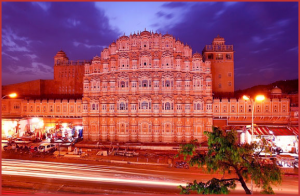
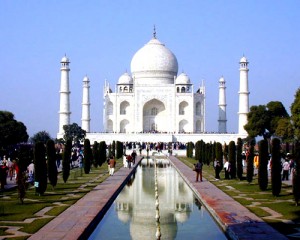
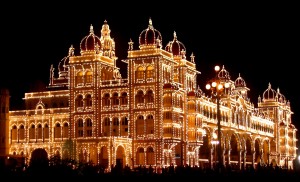
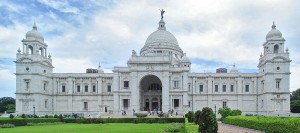
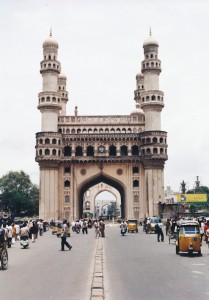








comment:
p_commentcount